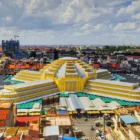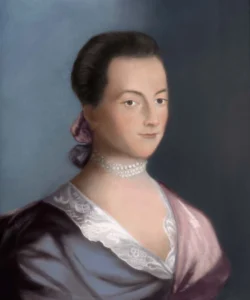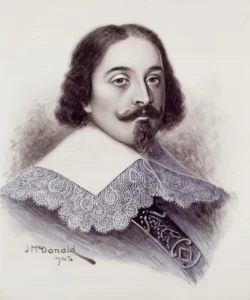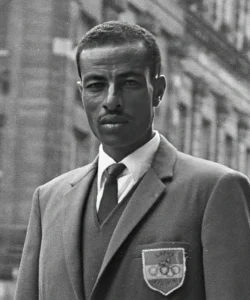Name: Andrew Ellicott Douglass (commonly known as A. E. Douglass)
Introduction: A. E. Douglass was an American astronomer and archaeologist. He is most famously known as the founder of dendrochronology, the scientific method of dating and interpreting past events by analyzing patterns in tree rings. His groundbreaking work established a precise chronology for archaeological sites in the American Southwest and revolutionized our understanding of past climates.
Date of birth: July 5, 1867
Died: March 20, 1962 (aged 94), in Tucson, Arizona, U.S.
Height: Information not widely available.
Place of birth: Windsor, Vermont, U.S.
Family:
- Parents’ names: Reverend Malcolm Douglass (father) and Sarah Elizabeth (née Hale) Douglass (mother). His father was a clergyman.
- Siblings: He was the fifth of six children. He had five siblings: Charles Edward, Mary Caroline, Benjamin Hale, David Bates, and Dr. Malcolm Douglass.
- Spouse: Ida Whittington Douglass (née Whittington).
- Children: Information not consistently available, but no publicly known children are listed in major biographical sources.
- Relatives: His father was a prominent clergyman, and his family had a strong academic background.
Profession: Astronomer, dendrochronologist, academic administrator, archaeologist.
Nationality: American
Religion: His father was a Reverend, suggesting he was raised in a religious (likely Protestant) household, but his personal religious views are not widely detailed in biographical information.
College or university attended:
- Punchard Free (High) School (Andover, Massachusetts)
- Trinity College, Hartford, Connecticut (graduated with honors in astronomy, mathematics, and physics in 1889).
Biography and What Famous For:
A. E. Douglass developed an early love for astronomy. After graduating from Trinity College, he began his scientific career at Harvard College Observatory in 1889, participating in an expedition to Peru to help establish Harvard’s Southern Hemisphere Observatory.
He then became an assistant to Percival Lowell at the Lowell Observatory in Flagstaff, Arizona, from 1894 to 1901. While there, he conducted astronomical observations, including on Mars, but had a falling out with Lowell when his observations led him to doubt the existence of artificial “canals” on Mars, contradicting Lowell’s theories.
It was during his time in Arizona, while studying the effects of solar activity on Earth, that he made his pivotal discovery. Douglass observed a correlation between tree ring widths and cycles of solar activity (sunspots). This led him to hypothesize that tree rings could be used as a record of past climate conditions.
A. E. Douglass is most famous for:
- Founding the Discipline of Dendrochronology: This is his primary legacy. He developed the scientific method of tree-ring dating, which involves analyzing the annual growth rings of trees to date events and study past climate and environmental changes. He coined the term “dendrochronology.”
- Discovering the Correlation Between Tree Rings and Sunspot Cycles: His initial work focused on finding evidence of solar variations in tree rings, believing that thinner rings correlated with dry years and could reflect solar activity.
- Revolutionizing Southwestern Archaeology: Douglass’s most significant practical application of dendrochronology was in dating ancient Native American pueblo and cliff dwellings in the American Southwest. By cross-dating living trees with timbers found in archaeological sites, he was able to create a master chronology. In 1929, he made a breakthrough by bridging a gap in his chronology, allowing him to assign absolute calendar dates to numerous prehistoric sites, including those at Mesa Verde, Canyon de Chelly, and the Aztec Ruin. This provided a precise timeline for Southwestern archaeology for the first time in history.
- Founding the Laboratory of Tree-Ring Research: In 1937, he established the Laboratory of Tree-Ring Research at the University of Arizona, which remains a world-renowned center for dendrochronological studies.
- Establishing Steward Observatory: He was instrumental in securing funding and establishing the Steward Observatory at the University of Arizona, becoming its first director (1918–1938). He also served as a professor of astronomy and later dendrochronology at the university.
Douglass’s work profoundly impacted fields beyond astronomy, including archaeology, climatology, and ecology, by providing a precise and extensive record of past environmental conditions. Craters on the Moon and Mars are named in his honor.
Have participated:
Institutions/Positions:
- Harvard College Observatory (Research Assistant, 1889–1894)
- Lowell Observatory (Astronomer, 1894–1901)
- University of Arizona (Professor of Physics and Astronomy from 1906, later Professor of Dendrochronology from 1936)
- Steward Observatory (Founding Director, 1918–1938)
- Laboratory of Tree-Ring Research (Founding Director, 1937–1958)
- Interim President, University of Arizona (briefly)
- Dean of the College of Letters, Arts and Sciences, University of Arizona (briefly)
- Probate Judge for the town of Flagstaff (briefly, after leaving Lowell Observatory)
Key Scientific Contributions:
- Development of Dendrochronology (tree-ring dating).
- Discovery of sunspot-tree ring correlation.
- Establishing archaeological chronologies for the American Southwest.
- Pioneering the photography of the zodiacal light.
Notable Publications (Selected):
- Climatic Cycles and Tree Growth (multiple volumes, 1919-1936)
- Various scientific papers on astronomy and tree-ring research.
A. E. Douglass Photos:







































